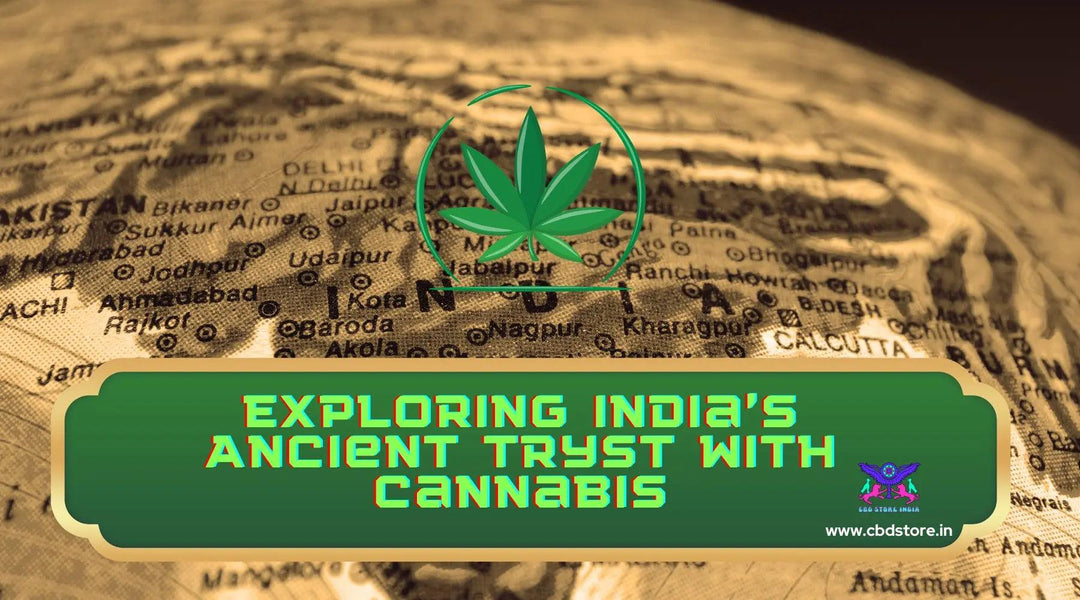Exploring India's Ancient Tryst with Cannabis: A Look at Our Countercultural History
Cannabis has been used by humans for thousands of years, but its widespread use across ancient India is particularly mysterious. the plant has had a significant role in the culture and religion of the country for centuries.
Here we will explore how India's relationship with cannabis has evolved over time, from its traditional use in Hinduism and Ayurveda to its current legal status. It will also look at how India's stance on cannabis is changing due to new research and changing public opinion.
It was used in ancient texts such as the Atharva Veda, where it is mentioned as one of the five most sacred plants on Earth and says that a guardian angel resides in its leaves, a sacred text that dates back to 500 BCE.
Its use is documented in several other sacred texts including the Mahabharata. Cannabis has been used for medicinal purposes throughout Indian history, also finds its mention in other historic scriptures like Dhanvantari Nighantu, Sarngandhara Samhita and Kayyadeva Nighantu with a focus on pain relief from diseases like cancer and arthritis.
Uncovering the Mystery Behind Cannabis' Widespread Use Across Ancient India
Ancient India and the Use of Cannabis has been used in many different cultural contexts throughout its history in India. Some cultures have even associated cannabis with spiritual enlightenment. In medieval India, cannabis was popularly used as a medicine for ailments such as rheumatism, asthma, dysentery, gonorrhea, gastroenteritis, malaria-induced fevers and diarrhea.
Medical texts written during this period also describe how it could be an effective pain reliever when combined with opium (Duke).
After 1800 BC, ancient paintings show that cannabis was grown as a crop near Neolithic settlements around the Mediterranean basin. It has also been suggested that the powerful short-term physiological effects of cannabis may have influenced plant breeding.
Cannabis is first referred to in Hindu Vedas between 2000 and 1400 BC, in the Atharvaveda. By the 10th century BC, it has been suggested that it was used by Hindus as a hallucinogen.
The earliest known accounts of cannabis use come from Chinese and Indian historical records dating back to 2800 BC. The ancient people of the Indus Valley grew and consumed cannabis along with other plants such as opium. Cannabis was widely used by many civilizations in ancient times, and has been documented in throughout the world.
The Impact that Cannabis has had on Indian Culture Throughout History
Cannabis has been an integral part of Indian culture for centuries. From ancient times to the present, cannabis has been used in a variety of ways, from medicinal purposes to rituals and celebrations. It has also had a profound influence on art, music, literature, and philosophy.
The earliest textual records in Sanskrit about use of cannabis come from a Rishis (Sanskrit ऋषी) named Charaka Samhita (1000 BC–200 AD). A chapter in this text is dedicated to medical uses of cannabis and its derivatives. By the 10th century, mentions of other uses of marijuana such as "medicine to produce sleep" were found in Persian and Arabic texts, and the drug was mentioned in the works of many different Muslim physicians.
Cannabis sativa has been used by humans for millennia as a psychoactive drug. There is archaeological evidence of its use dating back to 6500 BC.The oldest written record of cannabis resin can be found in the Chinese pharmacopoeia dating back to 2800 BC. Anatomically and chemically, CBD is similar to some of the cannabinoids found in marijuana, in particular, and it acts on several receptors in the human body.
How the Legalization Movement is Transforming India's Relationship with Cannabis
Its use was widespread until the British colonized India in the 19th century and made it illegal. Now, as India’s government is considering legalizing cannabis, many are looking back at its history to understand why it should be legalized and how its past has affected the current legalization movement.
The Pros of Marijuana Legalization in India
Health Benefits of Marijuana Legalization in India. Marijuana is one of the most widely consumed substances worldwide and has been used as a traditional medicine for thousands of years. It contains a variety of chemical compounds, including tetrahydrocannabinol (THC) and cannabidiol (CBD), which have both shown potential therapeutic effects in humans and animals.
For example, THC has been found to have analgesic properties that can reduce pain, help with sleep disorders, regulate moods, and protect the brain from damage due to stroke or trauma.
CBD has been shown to relieve pain by inhibiting inflammation and reacting with neuroreceptors to reduce neuroinflammation and pain.Cannabidiol (CBD) is not only non-intoxicating, it can actually counteract the intoxicating effects of THC. The combination of CBD and THC has been found to decrease anxiety and promote restful sleep-in patients suffering from insomnia.
Interesting fact:
In the 18th and 19th centuries, British and American Protestant missionaries, primarily working with Indian students in Madras Presidency, India's southern province which stretched into what is now the state of Tamil Nadu, introduced cannabis to their local populations.
The first missionary to take an interest in the plant was Robert Sibbald from Scotland. He observed cannabis use among "high caste" Tamilians and published a report on this practice back home in 1790. In 1801 he returned with Dr Francis Buchanan to collect more information on cannabis use in Madras.
Apart from the religious context, the Indian system of medicine, ayurveda, has also been known to deploy cannabis as an active ingredient in medicines. As many as 191 formulations and more than 15 dosage forms have included cannabis as a primal ingredient for treating problems ranging from digestion problems to blood pressure.
Conclusion:
From inspiring great works of art to providing a unique perspective on life, cannabis has been an integral part of human culture for millennia. The role of cannabis has existed in Hinduism since at least the 8th century when it was reportedly used for religious purposes and is one of the most widely consumed substances worldwide as a traditional medicine.




